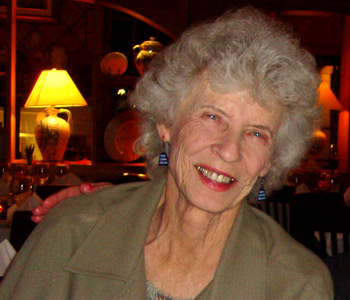Kristen Whissel
Picturing American Modernity: Traffic, Technology, and Silent Cinema
Duke University Press
288 pages, 5 3/4 x 9 1/8 inches
ISBN 978 0822342014
ISBN 978 0822341857
Picturing American Modernity is about how the early American cinema represented major changes taking place in American society, politics, and culture in the early twentieth century, particularly changes that were related to the introduction and spread of new technologies. Each chapter analyzes a group of films that directly represented a major, (inter)national, mass-mediated “event”: the Spanish-American war, the Philippine-American war, the Pan-American Exposition, where President McKinley was shot, and the “white slavery” scandal, prostitution rings involving white, working-class women. I focus on these events because for many turn-of-the-century Americans, they foregrounded the deeply ambivalent character of modern life and demanded new, self-conscious constructions of what it meant to be “American” in the machine age. That is to say, each made starkly visible both the possibilities associated with industrialization and expansion and its very serious perils.
Picturing American Modernity approaches these events as examples of the increasing incorporation of everyday life in the US into various forms of modern (i.e., high-tech) traffic. Each was linked to new forms of circulation and hence the increasing power and progress of the nation; yet all gave rise to high-tech crises that revealed various reasons to lament or resist the changes wrought by modern life. My book shows how the silent cinema—itself a new technology—made each of these events visible, knowable, and pleasurable to moving picture audiences.
In the process, the book discusses how film itself developed during its first two decades and considers how the development of new genres and new types of narrative emerged out of the cinema’s own struggles to accommodate major changes in modern American life. Throughout, I closely analyze non-fiction films made by the Edison Manufacturing Company shot in military camps before the Spanish-American War in 1898 or at the 1901 Pan-American Exposition in Buffalo, New York as well as fictional films directed by D.W. Griffith, George Loane Tucker, who directed the first American feature-length film, Traffic in Souls, and Lois Weber, the most prolific female American filmmaker of the silent era.

Picturing American Modernity provides insight into a moment in American history, including film history, when what we consider 'old' technologies were actually new, and it shows how the experiences, debates, and disasters that seem so new to us today are actually quite old.
Picturing American Modernity is concerned with understanding how new (and old) forms of mass entertainment such as moving pictures, world’s fairs and expositions, electric light displays, live reenactments such as Buffalo Bill’s Wild West, and magazines helped Americans make sense of and even delight in the experience of modern life. If anything, modern life in the United States was defined by the absorption of everyday life into new patterns of “traffic.” By this I mean not just an increase in automobile and pedestrian traffic on busy city streets; rather, I mean broader, networked patterns of traffic that entwined everyday life in ways that were visible and invisible. In this sense, “traffic” includes new forms of transportation and communications technologies that helped speed finished products through factories to markets across the US and overseas, as well as the mobilization of immigrant populations from Asia and Europe to the US to create a cheap supply of labor. It also includes new forms of electrification that spread web-like through cities to power assembly lines as well as amusement parks and illuminated movie screens and department store displays, and eventually incorporated much of the US into an expanding network of circuits and currents.
The early cinema was very well suited to the task of providing audiences with dynamic images of modern traffic that dramatized its perils as well as its thrilling possibilities. As non-fiction films made in 1898 of troops preparing for the Spanish-American war suggest, absorption into new patterns of imperial traffic could refurbish the image of modern American masculinity by joining received definitions of traditional chivalry and discipline with a new, modern relationship to military technologies that seemed to make naval recruits heroically immune to the “shocks” of warfare. By contrast, films about the so-called “white slavery” scandal warned young workingwomen about the dangers of being absorbed into modernity’s more “illegitimate” forms of traffic—specifically the traffic in prostitutes that was rumored to thrive in cities across the United States. Such films often implied, quite scandalously, that more legitimate forms of everyday traffic, such as ordinary commerce or the mass transportation provided by steamship and railway companies, supported the traffic in women and even helped create a supply of young girls who might be procured for this trade. The 1913 film Traffic in Souls rather sensationally linked wealthy industrialists, reform movements, dance halls and candy shops to prostitution rings while others, such as Lois Weber’s film Shoes, suggested that casual and occasional prostitution was the inevitable plight of working class girls who didn’t earn enough money to support themselves and other family members who depended upon them for their livelihood.
I became interested in researching and writing about the silent cinema’s representation of modern life and traffic after seeing films that were shot at the Pan-American Exposition by Edwin S. Porter, who made films for Edison. I first saw these films in the early 1990s while I was a graduate student at Brown University working as a teaching assistant for faculty in the Department of Modern Culture and Media (these films are now available to view on the Library of Congress “American Memory” website). Porter filmed the Exposition’s nighttime illumination, which was called “The City of Living Light.” When I first saw these films, I thought they were astonishing: Porter filmed the nighttime display in 360-degree panning shots and created a rather beautiful abstract image of the new, rapidly expanding electric network that made the display possible. After researching the Pan-American, I realized that the exposition both celebrated new technologies and the power associated with them and gave many Americans cause to lament industrialization and the myriad social and economic problems it caused after Leon Czolgosz, an unemployed laborer, shot President McKinley there and was later executed in the electric chair. This deep ambivalence around modern technologies and new forms of traffic seemed to mark all of the other major (inter)national events I had been working on, and so I brought them together in Picturing American Modernity.
Sections of chapter 4 focus on the first feature film, Traffic in Souls (1913), short films by D.W. Griffith, such as The Lonedale Operator (1911), and Lois Weber’s amazing film Suspense (1912). These films are extraordinary because of the degree to which they are based on the premise that to participate in modern life is to be absorbed into traffic. This is true whether the films are set in a big city (Traffic in Souls), a suburb (Suspense) or a rural area (The Lonedale Operator). Moreover, they feature protagonists who unwittingly find themselves detoured into illegitimate or criminal forms of traffic without any notice. They feature complex forms of rapid cross cutting to create suspense around their characters’ movements through city streets, along railway lines, across Ellis Island, and even along dirt roads. Each reveals how the concept of “traffic” with its multiple lines of movement across space and time helped organize strategies of film narration as production companies began to leave behind the short two-reel film that was the staple of most moving picture shows between 1908 and 1913 and began making more features (5 reels or more) after 1913.
This shift towards more features, in turn, had serious implications for moving picture audiences who were accustomed to thinking of themselves and experiencing moving pictures as part of the “traffic” that moved into and out of cinemas. Before the rise of the long feature, audiences could simply “drop in” to a moving picture show anytime they wanted and get up and leave at any point. As part of the customary “variety format” of a film program, audiences could expect to see four or five two-reelers and perhaps a slide show and a live musical performance. Programs ran continuously without an official start or end time. If a patron came in midway through a film, they simply had to wait five or six minutes until a new film started and they could settle in and enjoy the program. Many moving picture patrons relied on this flexibility and stopped into moving picture shows while running errands, while on a lunch or dinner break, or on their way home from work. In short, it was very easy to walk in off the street, enjoy a few films, and leave whenever one wished while still feeling satisfied by the experience. The exhibition of feature-length films forced patrons to adjust their movie-going habits. They now had to wait much longer for a film to start over again and sometimes had to sit through the second half of a movie without understanding at all what was going on before the film began again. This required some real adjustment on the part of audiences and exhibitors who often made their profit from the high turnover that the “variety program” of short films made possible. I make connections between representations of traffic in film, the use of the concept of traffic in creating new narrative patterns in longer films, and the effect on the “traffic” that moved through moving picture houses in the first section of Chapter 4.

Moving picture audiences were accustomed to thinking of themselves and experiencing moving pictures as part of the 'traffic' that moved into and out of cinemas. Before the rise of the long feature, audiences could simply 'drop in' to a moving picture show anytime they wanted and get up and leave at any point.
I think Picturing American Modernity is particularly relevant to our current experiences and the events that the book covers will resonate with contemporary readers. The book begins with a national crisis: the explosion that sunk the Battleship Maine, killing hundreds of American soldiers and starting two overseas wars, the Spanish-American War and the Philippine-American War, changed the way most Americans thought about themselves, their place in the world, and the various technologies and media that shape everyday life. The early 2000s repeated this pattern with 9/11/01, the wars in Afghanistan and Iraq, and the experience of revolutionary technological change. Even the “white slavery scandal” echoes in current debates about, and representations of, new media, the internet, and the vulnerability of children or young women to sexual predators, real or mythological. Picturing American Modernity provides insight into a moment in American history, including film history, when what we consider “old” technologies were actually new, and it shows how the experiences, debates, and disasters that seem so new to us today are actually quite old.




We don't put paywalls. We don't distract you with ads. We don't sell your data.
Please help to keep this running!